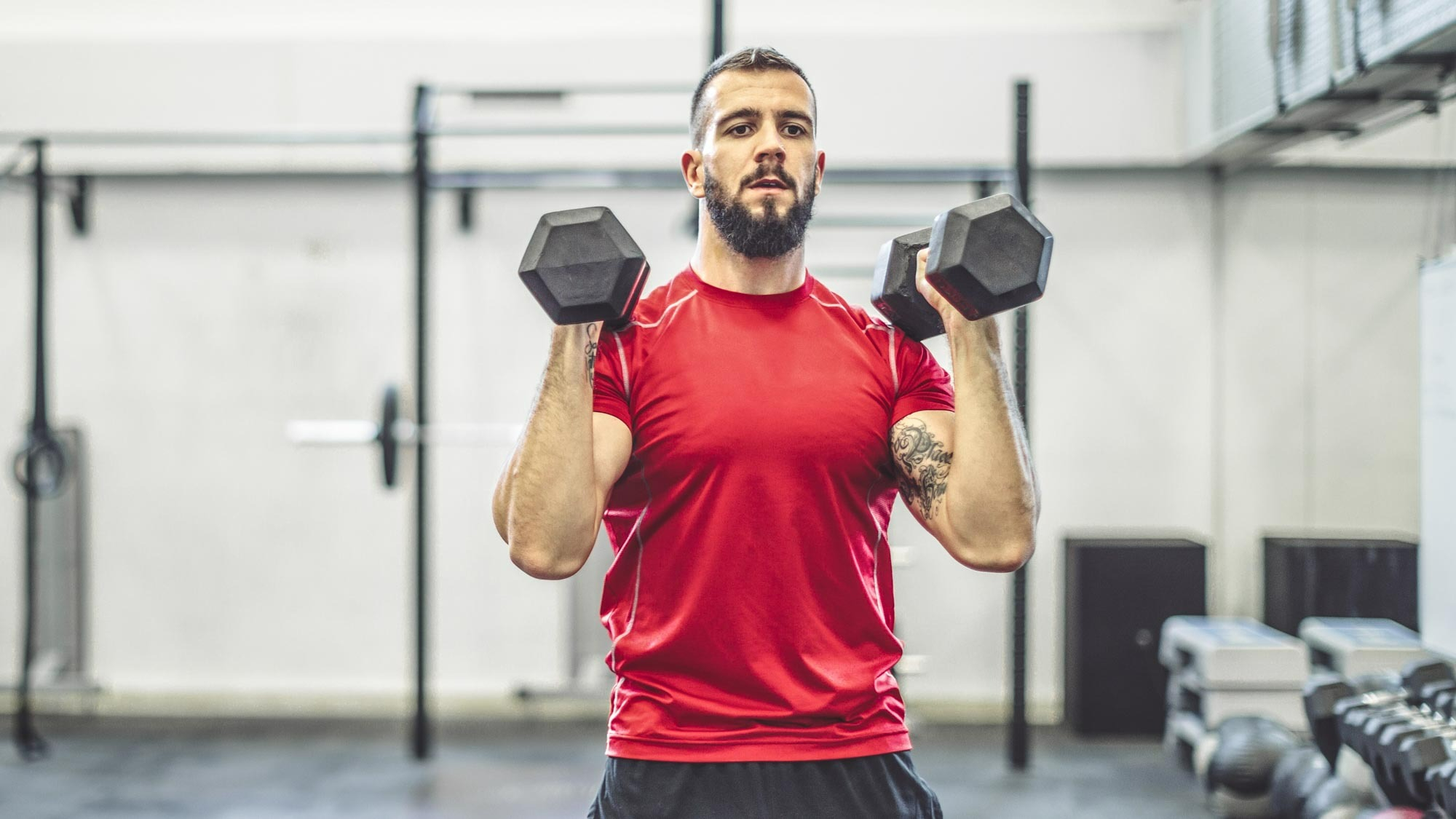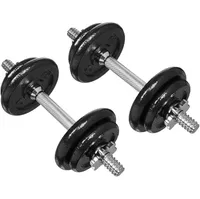You only need 25 minutes and a set of dumbbells to build full-body muscle and boost your metabolism

Even with the best intentions, you won’t always have lots of time to exercise. Between work, social events, and family life, it can be hard to find time for extended gym workouts. Fortunately, you can still get muscle-building results with just a single set of weights in 25 minutes.
All you need is a pair of dumbbells to get started. Fixed-load weights will do, but if you regularly train at home, it’s worth investing in a set of the best adjustable dumbbells. These combine several weights, making them easier to store, and you can increase the weight as you get stronger.
Amazon Basics 19 lbs Adjustable Dumbbells Set | $49 at Amazon
These budget-friendly weights are ideal if you're just getting into strength training. The weights plates are easy to remove, and the textured handle is easy to grip. Plus, Amazon offers next-day delivery on these if you want to get started asap.
However, once you’ve got dumbbells by your side, you’re ready to take on this short, intense routine from personal trainers Juice & Toya. The duo has designed this 25-minute session to work muscles across your whole body, raise your heart rate, and boost your metabolism.
To get these results, the workout is split into three levels, with eight exercises in each. You’ll do each move for 40 seconds, rest for 15 seconds, then start on the next exercise. There’s also a longer 30-second break between levels to help you catch your breath and give your muscles a quick rest.
As it’s a high-intensity routine, the duo advises choosing a medium weight for this session. You want to select a load that’ll challenge your muscles to get through a set, but won’t affect your form. For reference, Toya uses a 10 lbs pair, while Juice alternates between a 15 lbs and 20 lbs set.
Watch Juice & Toya’s 25-minute dumbbell HIIT workout
The challenge increases as you progress through the levels, so it’s important to choose a load that’ll get you through to the end. However, if you do find it too intense, it’s okay to stick with the previous level, choose a lighter weight, or increase the rest period.
This is important, as you don’t want to struggle to make it to the end of the set and do the exercises without proper form, as this could lead to injury. Plus, it’s a good way to track your progress, as you’ll be able to adjust up as you get stronger, in line with progressive overload training.
Get instant access to breaking news, the hottest reviews, great deals and helpful tips.
Juice and Toya label this as a high-intensity interval training (HIIT) workout, but with dumbbells. It’s more common to find HIIT sessions without equipment, or potentially some light weights, so this routine is more like a high-intensity resistance training (HIRT) workout.
Both styles use similar techniques, but HIRT tends to focus on muscle-building exercises, rather than the cardio-focused moves found in many HIIT routines. However, they have similar heart rate-raising effects, making them ideal for when you want to burn fat.
The aim is to exercise intensely in short bursts with minimal rest, which helps raise your heart rate, so you burn more energy than during an equivalent steady-paced workout. But sustaining this high heart rate also helps boost your metabolism (the amount of energy you burn throughout the day).
However, whether you’re new to strength training or a seasoned lifter, you’ll likely feel the effects of delayed-onset muscle soreness (DOMS) the following day caused by tiny tears in your muscle fibers. You can help your body recover by getting a good night’s rest, doing some stretches, and eating enough protein.
More from Tom’s Guide
- Forget the gym — you just need a pair of dumbbells and 6 exercises to build full-body muscle
- I tried this 8-move full-body dumbbell workout, and I felt stronger in just 25 minutes
- You don’t need the gym to build full-body muscle, just this 30-minute dumbbell workout

James is Tom's Guide's Buying Guide Editor, overseeing the site's buying advice. He was previously Fitness Editor, covering strength training workouts, cardio exercise, and accessible ways to improve your health and wellbeing.
His first job at as a sales assistant in a department store, and this is where James learned how important it is to help people make purchasing decisions that are right for their needs, whether that's a fountain pen to give as a gift or a new fridge for their kitchen.
James is an advocate for sustainability and reparability, and focuses his reviews and advice through that lens to offer objective insights as to whether a specific product or service will be right for your needs.


